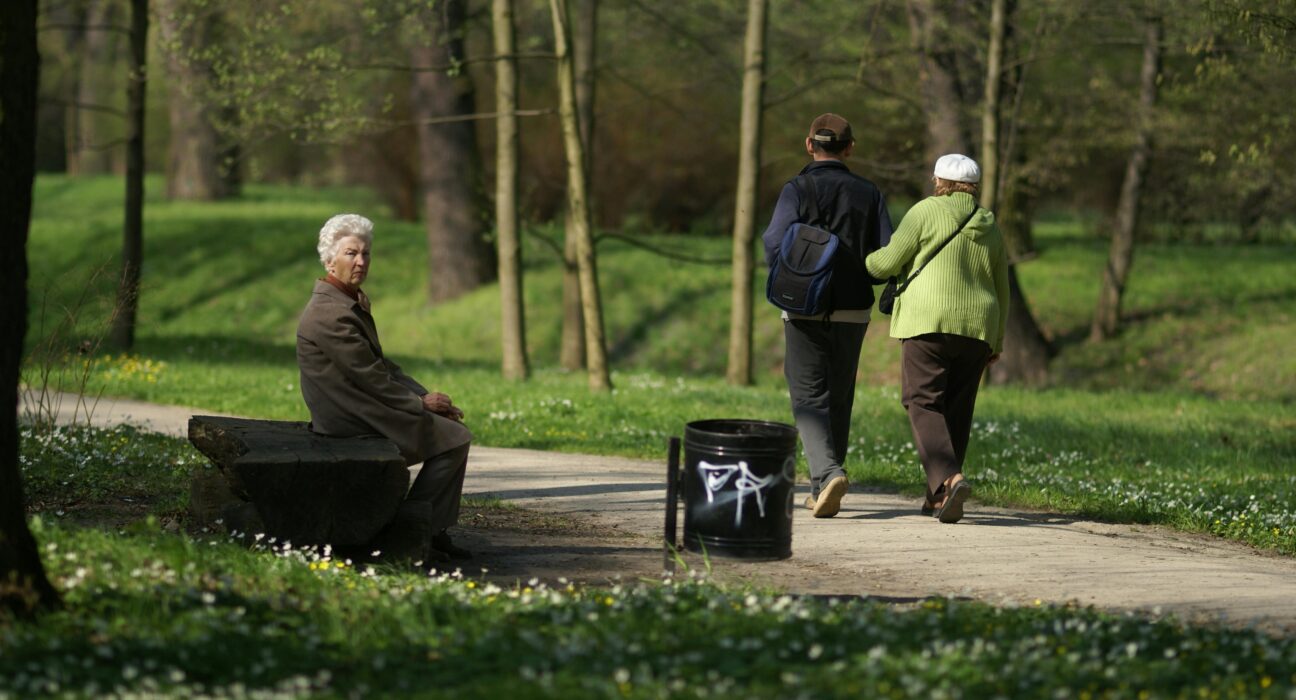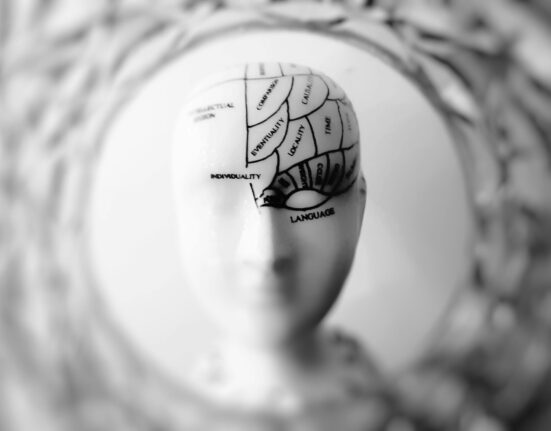Soft sunlight filters through swaying branches as your shoes crunch along a quiet path. Leaves whisper above, birds dart in the warm air, and you feel tension slip away with each steady step. With every walk, your mind clears—a gentle focus sharpens your thoughts, and a subtle, hopeful energy builds inside you.
Science shows these daily moments do more than lift your mood. Regular walking feeds your memory and improves mental clarity, helping defend your brain against forgetfulness and distraction. A simple walk, repeated every day, can spark real change in how you think and remember, turning an ordinary habit into a powerful boost for your mind and well-being.
How Walking Boosts Memory and Brain Health
A stroll through the park is not just a break for your legs—it’s a gift to your mind. Every time you go for a walk, powerful changes ripple through your brain. Fresh oxygen and nutrients flood in with your increased heart rate. Protective proteins rise, old cells renew, and your memory network gets stronger. Let’s look closely at how simple steps can help you think clearer and remember more.
The Science: Steps that Build Brain Power

Photo by Anastasia Shuraeva
When you start moving, your heart pumps faster, sending more blood through your brain. This steady, increased flow gives brain cells a fresh supply of oxygen and nutrients. Think of it like watering a garden—suddenly, life flourishes.
But the magic of walking runs deeper. Your body produces a key protein called brain-derived neurotrophic factor (BDNF). BDNF is like fertilizer for your brain. It encourages the growth of new cells and keeps existing ones flexible and strong. This process, called neurogenesis, especially happens in the hippocampus—the memory center of the brain.
Scientific studies confirm these effects:
- A 2023 review found that exercise, like walking, boosts blood flow and BDNF levels, leading to new brain cell growth and better plasticity [The effect of exercise on cerebral blood flow and executive …].
- Researchers observed that regular, moderate walks grow the size of the hippocampus—an area that shrinks with age and in conditions like dementia [Exercise training increases size of hippocampus and …].
- More hippocampal volume means better memory performance and sharper thinking. A 2011 study even showed people who walked regularly improved their memory scores, directly matching the increase in the size of this brain area.
Low-intensity walks add up, too. Even short daily strolls increase blood flow, helping the brain stay nourished and resilient [Low-intensity daily walking activity is associated with …]. These regular boosts act as daily armor against memory loss and fading brainpower.
Sharper Focus and Creativity
Ever notice how a walk outdoors can clear your head? Walking works like a gentle broom, sweeping away built-up mental cobwebs so you can better concentrate. Fresh air and movement spark your senses, waking up areas of your brain that power sharp thinking.
Here’s how walking helps unleash your best ideas:
- Restores focus: Changing your environment and pacing your steps breaks the monotony. This refresh naturally resets attention, so you return to your work with a sharper mind.
- Boosts creativity: Studies show creativity jumps by up to 60% during and right after walking. It’s as if your thoughts can roam more freely, making unexpected connections. Writers, artists, and inventors have long used walks to bring new ideas to the surface.
- Supports problem solving: Complex worries start to feel more manageable while walking. Puzzles untangle themselves as your stress level drops, and you find better ways to handle daily tasks.
Real-life benefits flow right into your day-to-day:
- At work, you may find solutions on a lunch break stroll that didn’t appear while sitting at your desk.
- At home, a quick walk can reset your patience and help you remember where you left your keys.
- Even in creative pursuits, from drawing to writing, ideas can arrive mid-step, fresh and ready to use.
Want to enjoy more of these mental boosts? Science backs you up. Moderate walks support better brain health and may even help new cells grow in memory-related areas, feeding your next big idea [5 Ways Walking Can Boost Your Brain Health].
Your daily walk isn’t just good for your body—each step fuels a quicker mind, steadier memory, and a more creative spirit.
How Many Steps Matter?
We hear it everywhere: walk 10,000 steps a day. But new studies suggest you don’t need to hit that big number to see real changes in memory and brain health. Even short bursts of daily walking—fewer than you might guess—carry surprising benefits for your mind. Let’s look at what the research reveals about step counts and simple ways to add more movement into your daily routine, all without making it feel like a chore.
Stepping Into Health: What Research Shows

Photo by Quintin Gellar
Forget the old myth that only 10,000 steps count. Recent years have seen a flood of new science pointing to much lower—and far more accessible—numbers for sharp minds and healthy bodies.
What’s the magic number? Multiple studies have found strong memory and health benefits start to appear with daily step counts as low as 4,000 to 7,000. These numbers aren’t random. In fact, a 2023 review in JAMA Neurology linked just 4,000 steps a day to boosts in longevity and lower dementia risk, especially when those steps are brisk and spread throughout the day. Each 1,000-step bump corresponds to a measurable gain in thinking skills and memory strength, sometimes offsetting years of normal age-related memory decline [Walking & Longevity: How 4000 Steps a Day Supports Health][Association of step counts with cognitive function in older adults].
A systematic review from 2024 supports these figures, showing big mental health rewards—like better focus and less depression—when adults aim for 4,000 to 7,000 steps, with no big leap in benefit at 10,000 compared to 7,000 [Daily Step Count and Depression in Adults].
Is there a minimum dose? Even just 2,200 daily steps—think of a half-mile walk or moving around your home and neighborhood—has been linked to sharper mental clarity and lower risk of memory problems. If you’re over 60, research suggests 6,000 steps may be enough to unlock much of walking’s cognitive power [The Minimum Effective Dose of Walking]. For younger adults, 7,000 steps appears to be a strong goal—roughly 30 to 45 minutes of walking broken up over the day.
In summary:
- 4,000 to 7,000 steps daily: Linked to better memory, lower dementia risk, longer life.
- 2,200 steps daily: Still confers brain benefits, especially for those just starting out or with limited mobility.
- 10,000 steps is not necessary for most people. Consistency and enjoyable movement win every time.
If you’d like to read deeper into these numbers, organizations like the Alzheimer’s Information Network break down how step counts support brain health at various levels [Walk This Many Steps a Day to Halve Your Dementia Risk].
Simple Ways to Walk More Every Day
Adding more steps doesn’t have to mean winding up sweaty and exhausted. Small, creative changes can stack up hundreds—or even thousands—of extra steps without extra effort.
Here are friendly, practical moves to make walking a part of any day:
- Turn errands into strolls. Park farther from the store, take the stairs, loop the long way on your block. Just five extra minutes means over 500 extra steps.
- Make walking social. Invite a friend or family member for a conversation walk. Connecting while moving boosts mood and memory at the same time.
- Switch to walking meetings. Swap out one weekly work meeting for a call or in-person walk. Even 20 minutes of movement sharpens focus and gets your creative wheels turning.
- Pick up “walk and talk” calls. If you’re on the phone, pace your hallway, backyard, or a quiet street.
- Stroll after meals. Make it a tradition to walk for 10 minutes after dinner. This not only lifts your daily step count, but also helps manage blood sugar and digestion.
- Use reminders. Set gentle alarms to stand up and walk around every hour. Over the course of a day, those quick breaks can add hundreds of steps.
It helps to reframe walking as a chance for a break, not a task. Choose podcasts or music you love, dress for weather comfort, and look for little joys along your route—a neighbor’s blooming garden or your city’s hidden corners. Over time, these moments help walking feel less like exercise and more like a treat.
With these small changes, you’ll notice your step count rising almost by accident. And every one counts toward keeping your memory swift and sharp.
Beyond Memory: Walking’s Total-Body Impact
A daily walk shapes more than memory. It tunes the whole body—muscles, heart, lungs, and nerves—in gentle harmony, creating a ripple effect you can feel long after you stop moving. With each step, your mood brightens, your worries fade, and your nights grow restful. The true strength of walking lies in its power to heal both mind and body, making every walk a small act of self-care.
Movement as Medicine: Frame walking as an accessible, low-tech therapy for mind and body. Bring in examples of stress reduction, improved sleep, and social support from walking groups. Keep tone inspiring but evidence-based.

Photo by RDNE Stock project
Walking needs no special equipment, app, or gym membership. Lace up comfortable shoes, step outside, and you hold the same key to better health as every Olympic athlete. This everyday movement lowers barriers that keep many away from exercise, turning the world’s sidewalk, forest path, or neighborhood block into an open-air clinic for mind and body.
Stress Reduction
A brisk walk melts stress like sunlight on frost. Muscles loosen, clenched jaws unclench, and the mind starts to drift from worries. It’s more than a distraction. Research shows walking can drop levels of cortisol—the body’s main stress hormone—calming nerves with every stride. Whether you walk alone with your thoughts or talk with a friend, these slow, rhythmic steps help you leave tension far behind. A 2022 study reported that even mindful walking through nature or city parks increases relaxation and lifts mood, making pressure disappear for hours afterward [Effectiveness of a mindful nature walking intervention on mood].
Better Sleep and Steadier Mood
Good sleep sets the stage for sharper memory and brighter days. Regular walking works as a gentle sedative, syncing your circadian rhythm—the body’s natural clock—and clearing out mental clutter before bed. Researchers found that people who walk most days fall asleep quicker, spend more time in deep rest, and wake up refreshed [Testing the Relationship Between Physical Activity and Sleep].
The benefits don’t stop at the pillow. Daily walkers report steadier moods, less anxiety, and a stronger feeling of being in control. The simple act of setting a walking routine creates structure, bringing comforting predictability to busy or chaotic days. Many notice an uptick in energy, too—tiredness replaced with a steady spark that carries through work, errands, or family time [How Walking Can Benefit Your Mental Health].
Social Support and Community
Walking is more than a solo pursuit. From walking clubs in city parks to after-dinner strolls with neighbors, people use walking to connect and support each other. These shared walks offer space for conversation, laughter, and encouragement to stick with healthy habits. Members of walking groups often find accountability—knowing a friend is waiting gets you out the door even on hard days. That support can make the difference between giving up and showing up.
Physical Health Protection
Each walk lifts the heart rate, helping to lower blood pressure and safeguard the heart for the long haul. Regular walkers lower their odds of serious conditions:
- Heart disease
- Type 2 diabetes
- High blood pressure
- Certain cancers
Your body’s cells respond with gratitude. Daily walking helps regulate blood sugar, strengthens muscles and joints, and boosts immune defenses—all with little risk and great reward. The effects add up, shielding you from the chronic conditions that so often chip away at quality of life.
Mood-Boosting Chemistry
Don’t underestimate the power of endorphins. Walking triggers these natural mood-lifters, sending a wave of calm and pleasure through the body. On tough days, a quick walk can feel as soothing as a hot bath or a long hug—quiet, steady, and comforting.
In Summary:
- Walking is a low-tech, “open to all” therapy for body and mind.
- Relieves stress and anxiety, improving day-to-day mood.
- Supports deeper, more restful sleep.
- Builds social ties and accountability.
- Lowers risks for heart disease, diabetes, and memory loss.
- Costs nothing, fits any schedule, and delivers results you’ll notice.
With regular steps and an open mind, walking becomes more than basic exercise—it’s a medicine chest you carry everywhere, available whenever you need strength, calm, or belonging.
Conclusion
Every step carries the promise of a brighter mind. Walking isn’t only about movement—it’s a daily act that fuels memory, lifts mood, and brings clarity to everyday life. From a city sidewalk at sunrise to a leafy path full of birdcalls, these simple strides shape how we think and remember.
Today is the perfect time to take your next walk. Feel the air on your face, let your thoughts roam, and notice the way even a short stroll can unlock energy and focus. Your memory will thank you, step by step.
Thank you for reading. Share your walking stories below or invite a friend along for a morning walk. Every footstep you take helps build a sharper tomorrow.








